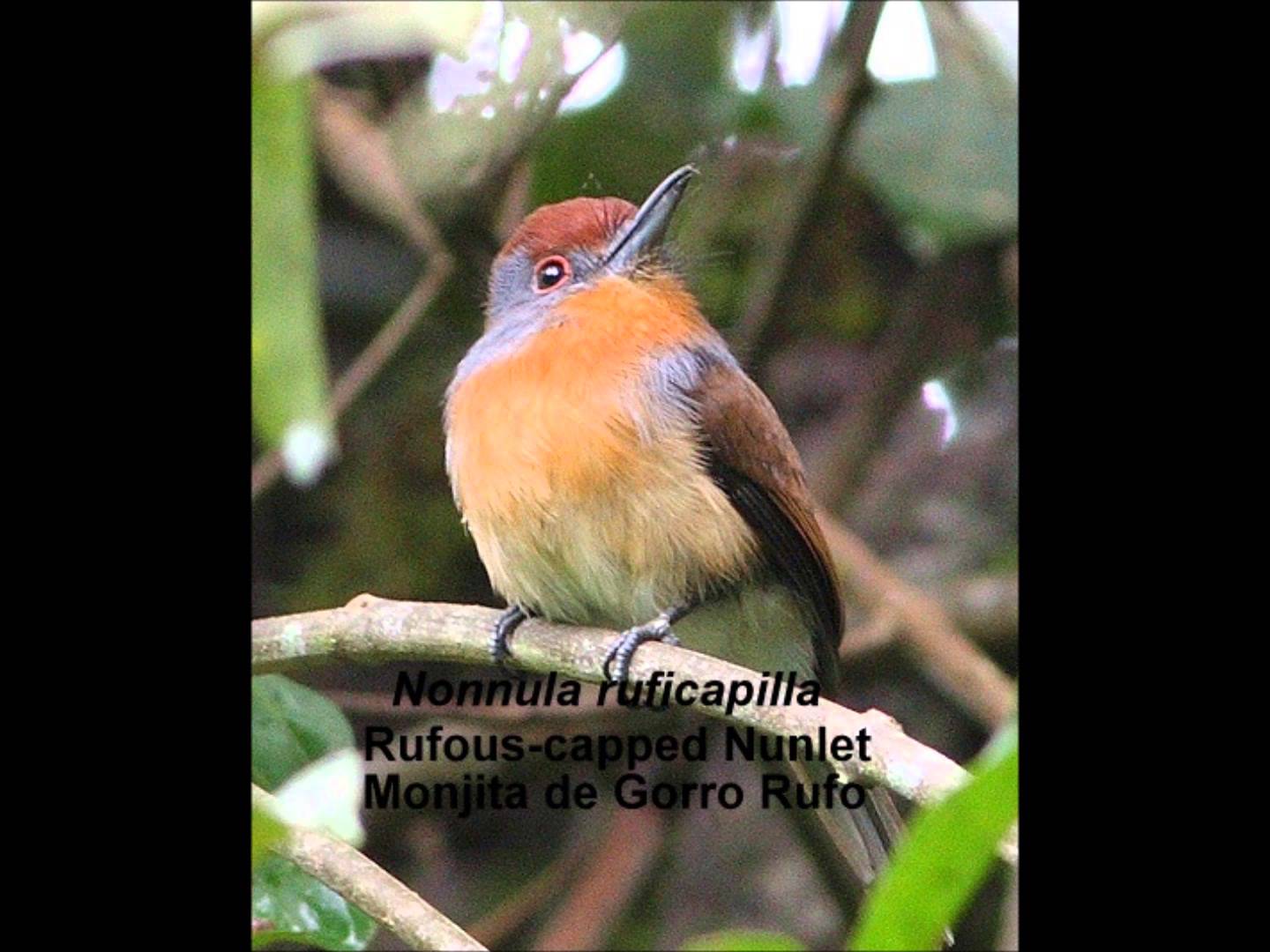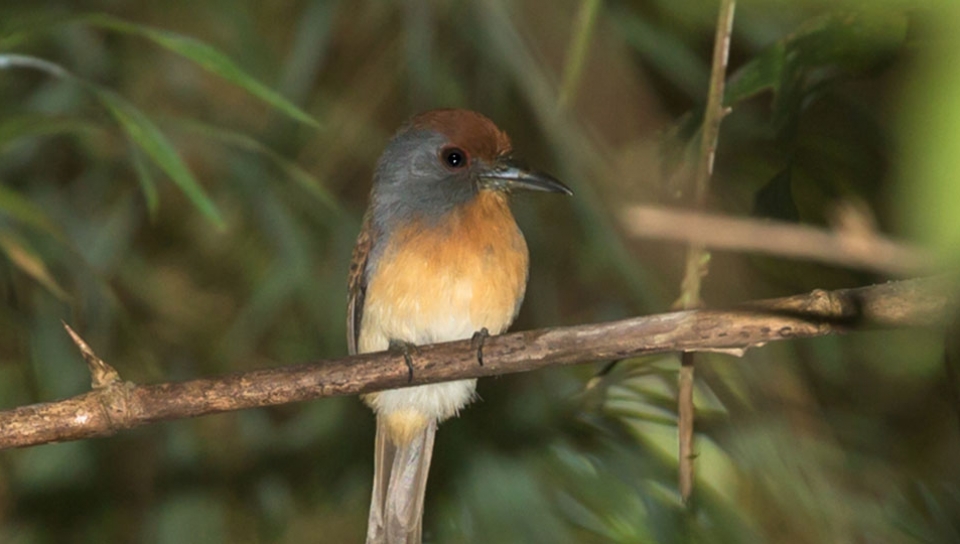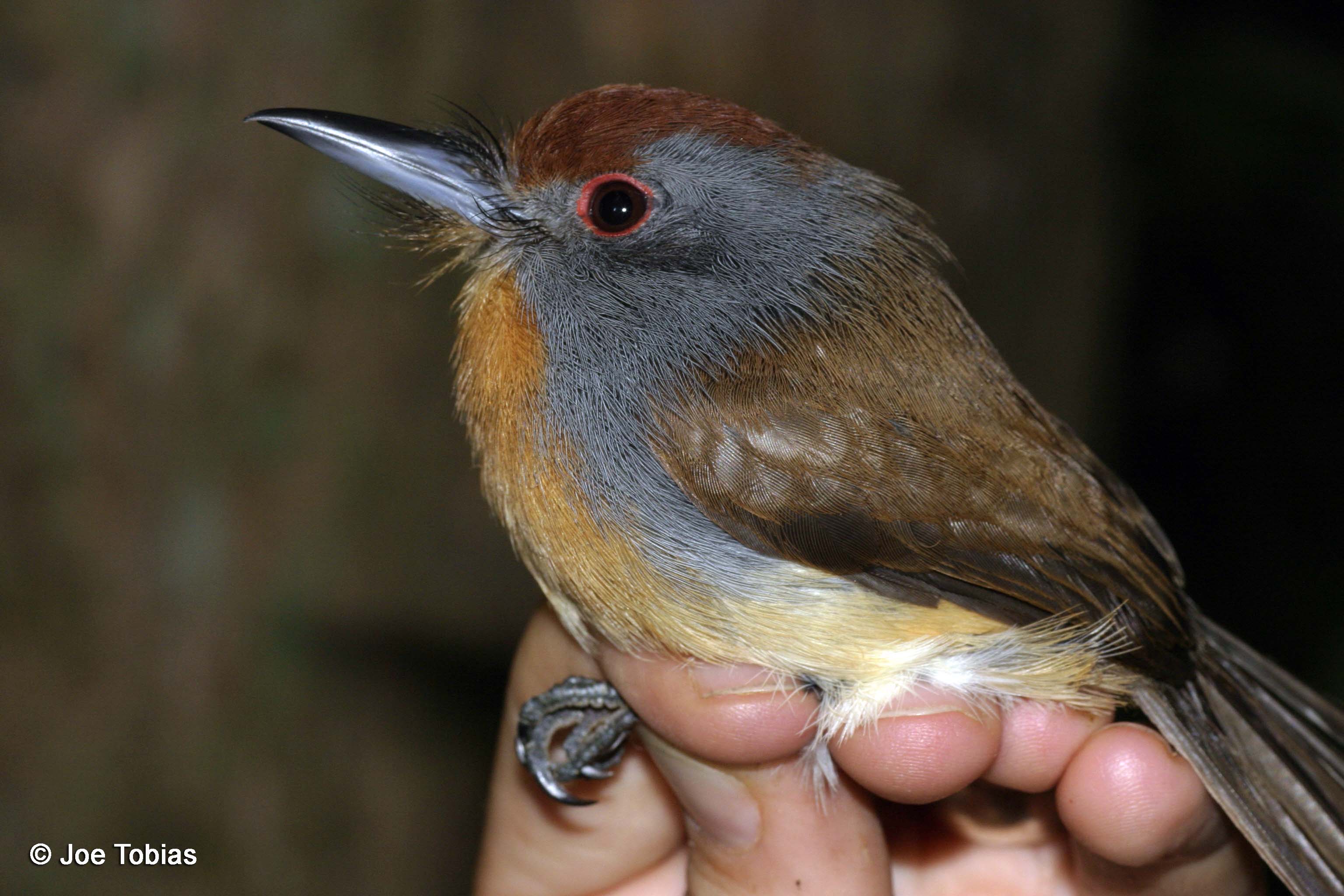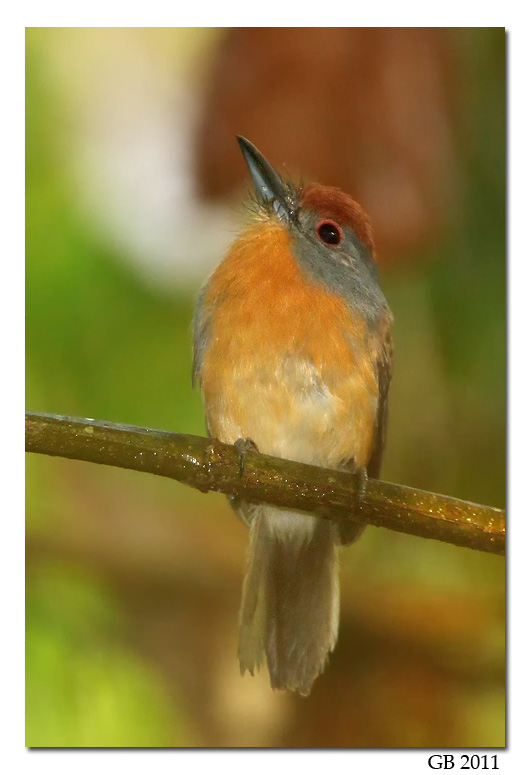
Nonnula ruficapilla
TAXONOMY
Lypornix ruficapilla Tschudi, 1844, Peru. Four subspecies currently
recognized.
OTHER COMMON NAMES
French: Barbacou а couronne rousse; German: Grauwangenfaulvogel;
Spanish: Monjita coronada.
PHYSICAL CHARACTERISTICS
5.3–5.5 in (13.5–14 cm); 0.49–0.78 oz (14–22 g). Small with fine
bill. Chestnut crown; face, nape, and sides of breast gray. Upperparts
brown, more rufous on underparts with whitish belly.
DISTRIBUTION
N. r. rufipectus: northeastern Peru; N. r. ruficapilla: eastern Peru
and western Brazil south of the Amazon; N. r. nattereri: northern
Brazil, Mato Grosso, and northern Bolivia; N. r. inundata:
eastern Parб, Brazil.
HABITAT
Mid-levels and undergrowth in humid forest edges, secondary
forest, streamside forest, and igapу. In most of range associated
with either bamboo or riverine regrowth.
BEHAVIOR
Singles (or quite often pairs together) usually found sitting quietly
in low vegetation where they sally for food.
FEEDING ECOLOGY AND DIET
Apparently exclusively insectivorous.
REPRODUCTIVE BIOLOGY
No information. Other members of genus reported to nest in
holes in banks or trees.
CONSERVATION STATUS
Not threatened. The species seems fairly common in suitable
HABITAT
.
SIGNIFICANCE TO HUMANS
None known.
Photo Gallery of - Rufous-capped nunlet




 Animalia Life
Animalia Life